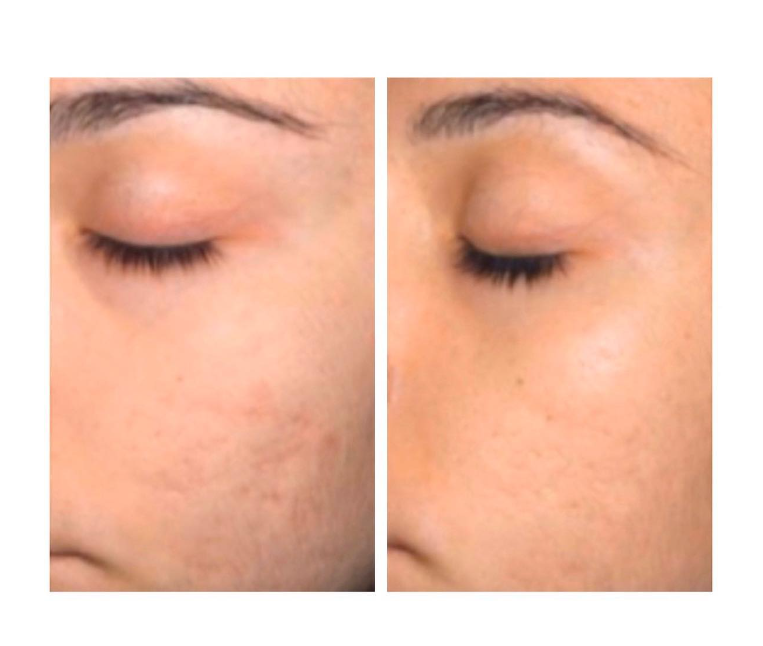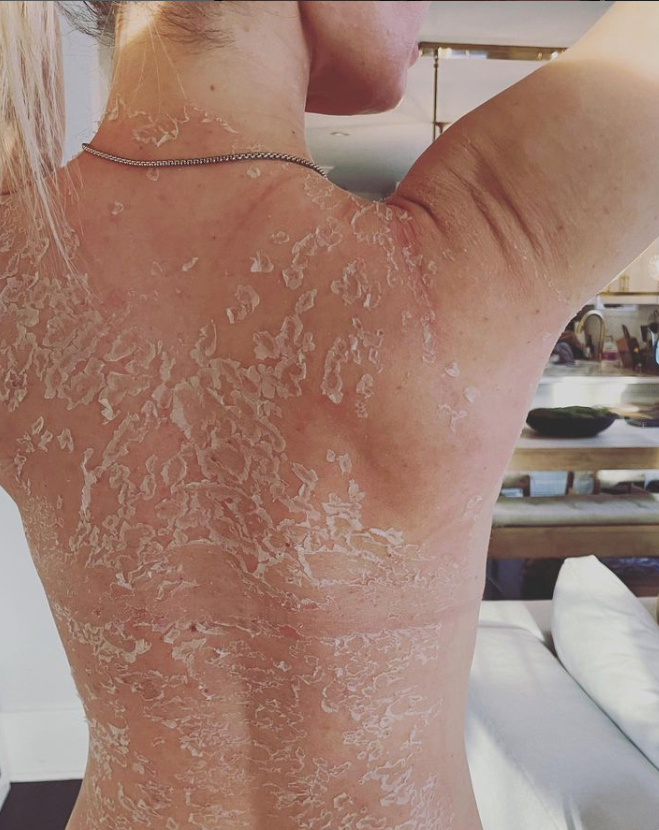Chemical peels are a popular cosmetic treatment for improving skin appearance. In this treatment, a chemical solution is applied to the skin to exfoliate and remove the top layer of skin cells. As a result, the skin becomes smoother and more even, with fewer blemishes and wrinkles. However, chemical peel aftercare can be harsh on the skin and requires proper care to ensure the best results and minimize potential side effects.
Why Aftercare Is Important After A Chemical Peel?
Aftercare is a critical component of the chemical face peel procedure. The skin is vulnerable and sensitive following a chemical peel, requiring gentle care to heal properly. Aftercare decreases the risk of complications and ensures the best possible outcome.
Chemical peels can cause significant skin damage, mainly if not used correctly. The solution applied to the skin during the chemical peel causes a controlled chemical burn, removing the top layer of dead skin cells. The skin must then heal, and it is more vulnerable to damage from the sun exposure, pollution, and other environmental factors during this time.
What To Expect A Chemical Peel After Treatment?
The skin may appear red and swollen after a chemical peel. It is normal to feel pain, tingling, and a burning sensation. The intensity of the redness and swelling is determined by the strength of the chemical peel solution used. A light peel may cause some redness, whereas a deep peel may cause significant swelling and discomfort.
The recovery time following a chemical peel can also vary. Mild peels usually only require a few days of recovery, whereas deeper peels can take up to two weeks. The skin is vulnerable during this time and requires proper aftercare to prevent infection and promote healing.
Chemical Peel Aftercare Dos and Don’ts
After a chemical peel, proper aftercare is necessary for the best possible outcome. Some dos and don’ts are given below.
Dos:
- Keep clean and dry skin. After post-chemical peel care, avoid getting your skin wet for at least 24 hours.
- Wash your face with a gentle cleanser. Avoid using abrasive soaps or scrubs that can irritate your skin.
- Regularly moisturize the skin. To keep the skin hydrated and prevent dryness, use a mild moisturizer.
- Use sunscreen with a minimum SPF of 30. After a chemical peel, the skin is more susceptible to sun damage, so UV protection is crucial.
- Follow the recommendations of your skincare professional. They will give you specific instructions based on your skin type and the type of peel you received.
Don’ts:
- Do not pick or scratch your skin. It can cause more irritation and increase the chance of infection.
- Avoid high-intensity exercise and activities that make you sweat. Sweat can irritate and further damage the skin.
- After a chemical peel, avoid using exfoliating products or harsh scrubs for at least one week.
- Stay away from hot water and steam, which can worsen the skin.
- Avoid using any products containing retinoids or alpha-hydroxy acids (AHAs) for at least one week following a chemical peel.

Side Effects of Improper Chemical Peel Aftercare
Improper chemical peel after care can have several negative consequences, including.
- Picking at or scratching the skin after a chemical peel can cause scarring. Scarring is more likely if the skin is not kept clean and hydrated during healing.
- If the skin is not kept clean and dry just right after the chemical peel, it becomes more susceptible to infection. Infection can cause significant scarring and slow the healing process.
- Uneven skin texture can occur if the skin is not properly moisturized during healing.
- Some individuals may be allergic to the chemical peel solution or other skin care products used during healing.
- During the healing process, uneven skin texture can happen if the skin needs to be moist enough.
Chemical Peel Aftercare For Different Skin Types
Depending on a person’s skin type, the care they need after a chemical peel can be different. Here are some basic rules for care after a chemical peel on skin type.
- Normal Skin: Typically, normal skin requires minimal aftercare. Use a mild cleanser, moisturizer, and sunscreen to hydrate and protect the skin.
- Dry Skin: After a chemical peel, dry skin can become even drier. Use a hydrating moisturizer after a chemical peel and avoid products containing alcohol, which can further dry out the skin.
- Oily Skin: Oily skin may require additional cleansing after a chemical peel. Use a gentle cleanser and avoid heavy moisturizers that can clog pores.
- Combination Skin: Aftercare for combination skin must be gentle and well-balanced. Use a gentle cleanser and a non-pore-clogging, lightweight moisturizer.
- Sensitive Skin: After undergoing a chemical peel, sensitive skin may be more prone to irritation. Utilize gentle and fragrance-free products, and avoid those containing retinoids or other potential irritants.
How Long Does Chemical Peel Aftercare Last?
The duration of aftercare for chemical peel depends on the peel’s intensity and the individual’s skin type. For mild peels, aftercare may only be necessary for a few days, whereas for deeper peels, up to two weeks may be necessary.

Chemical Peel Aftercare Instructions
The following three points are crucial to keeping in mind for your after chemical peel care.
- Skin protection
- Moisturize frequently
- Be gentle
What Moisturizer To Use After Chemical Peel?
After a chemical peel, it is critical to use a gentle, non-comedogenic moisturizer to help soothe and hydrate the skin. Here are some ingredients to look for in a post-chemical peel moisturizer.
- Hyaluronic Acid: It’s an excellent ingredient for post-peel hydration because this humectant can draw and hold moisture to the skin.
- Ceramides: After a chemical peel, these lipids help maintain the skin’s barrier function and prevent moisture loss, which can be beneficial.
- Aloe Vera: This natural ingredient contains anti-inflammatory properties that help soothe the skin and reduce redness and irritation.
- Allantoin: This ingredient can help the skin feel better and heal faster.
- Glycerin: It is another humectant that can help draw moisture into the skin and keep it from drying.
Chemical Peel Recovery Process
The healing process after a chemical peel can vary depending on the type of peel and the individual’s skin. Generally, the skin will start peeling and flaking within a few days after the chemical peel treatment, possibly red, sensitive, and slightly swollen. It is important to avoid picking or to peel the skin and to follow any specific aftercare instructions provided by your skincare professional.
Over time, the skin will heal, revealing a smoother, brighter, and even-toned complexion. The full healing process can take several weeks to a few months, depending on the depth of the peel and the individual’s skin.

Main Takeaways
Chemical peels are an excellent method for removing years from your skin. However, following the best take care of your skin after chemical peel practices critical to ensure the treatment’s safety and effectiveness. Most importantly, listen to your skin professional and follow their post-treatment recommendations for the best results.
If you want to read more. Click the following
FAQs
1. How Long Should I Wait To Shower After a Chemical Peel?
The time you should wait before showering after a chemical peel is determined by the strength of the peel and your skin’s sensitivity. A mild peel may allow you to shower within a few hours of the treatment, whereas a more intense peel may require waiting 24 to 48 hours before showering. To achieve the best results and reduce the risk of complications, following the aftercare instructions provided by your skincare professional is critical.
2. Should I Avoid Certain Foods Or Drinks After a Chemical Peel?
There are no specific foods or drinks that you need to avoid after a chemical peel. However, it’s essential to maintain a healthy diet and stay well hydrated to support the healing process and promote healthy skin. Avoid spicy, acidic, or salty foods that irritate the skin or cause inflammation.
Additionally, alcohol and caffeine may dehydrate the skin, so limiting your consumption of these drinks or increasing your water intake to stay hydrated is best.